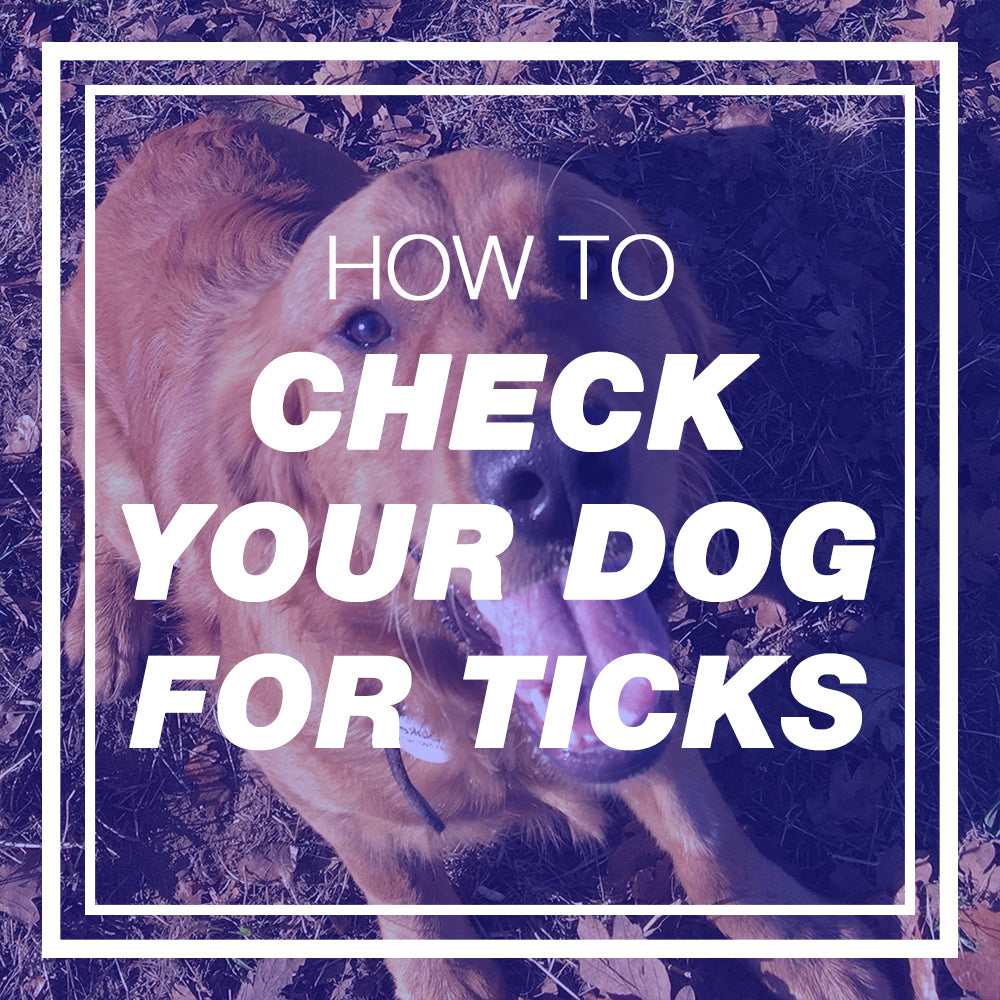It is vitally important now more than ever to check your four-legged family members for ticks. Ticks are eight-legged, small arachnids that can range in size from as small as a pinhead to as large a Number 2 Pencil eraser. Ticks suck the blood of other animals and carry diseases such as Lyme disease, which can be extremely harmful to humans and animals. Depending on where you live, your dog may be exposed to ticks and can easily bring them into your home. Setting up a systematic approach to check for ticks is an important step for daily pet care.
Before you start, understand that what you are looking for is a little noticeable bump or irregularity. As your working through this tick check, if you feel any bump or irregularity, make sure to pause your inspection and asses the bump thoroughly.
Lighting is Important
Make sure you have good lighting when inspecting your dog. You will want to inspect any irregularities to make sure of what you are looking at. Whether it be your kitchen or bathroom, find a place that has the best lighting. Inspecting areas, such as inside your dog’s ear, is where good light will become important.
Nose to Tail
You will want to make sure to check 100% of your dog making sure nothing goes unseen. Using a Nose to Tail Approach is a great structure to your routine tick checks. Starting with the nose is best because ticks tend to prefer areas that have more moisture and mucous.
Eyes, Ears, and Mouth
Make sure to look in and around your dog’s eyes. Take a good look inside your dog’s ears as well. Open them up wide and inspect every crevasse. Make sure to move any hair out of the way so that you can be sure you can see your dog’s skin. Next, inspect around your dog’s mouth, cover every piece of surface area.
Underneath the Collar
Lift up the collar and feel around. Push and pull the fur back and forth making sure you can see the skin. You need to cover this area thoroughly and this is a common place for
Chest and Front Legs
After inspecting underneath the collar, move down your dog’s chest and around their front armpits. (Yes, we understand dog’s don’t have armpits, but you get the point). Feel all the way down using a ring grip, wrapping both hands around the dog’s leg. Move down the dog’s leg slowly making sure to cover all surface area, feeling for any little noticeable bump or irregularity.
Paws, Pads, and Toes
In between your dog’s toes is a great spot for ticks to hide. Pull each toe apart gently and take a good look, making sure to move the hair around. Next make sure to look at each of the pads underneath your dog’s foot, looking around and in between them. These are easy spots for ticks to get wedged up in, especially because this a typical first exposure point for a tick.
Body and Abdomen
Once you are done inspecting your dog’s front legs, move further down the dog’s chest feeling for bumps as far as the dog’s groin. This may be easiest to do if you can get the dog to lay on it’s back or propped up on your knee. Expose the area around the hind legs near your dog’s belly. This area is easy for ticks to hide in and also a tough area for dog’s to get to themselves.
Hind Legs and Tail
Follow a similar procedure that you took to inspect the hind legs as you did with your dog’s front legs and paws. Feel all the way down using the ring grip, wrapping both of your hands around the dog’s leg. Move down each of your dog’s legs slowly making sure to cover all surface area. Then separate the dog’s toes and paws looking for any bumps. Lastly, take the same ring grip and feel over the dog’s tail and underneath.
If you find a tick at any point in your assessment you need to stop and begin the removal process. There are many great tick removal tools, which you can acquire from your veterinarian or your local pet store. Make sure to remove the entire tick quickly and carefully.
You may find that your dog likes the extra attention he gets from a tick check, so these routine checks will not feel as laborsome. We hope you found these processes helpful or at least a good starting point to help you keep your dog happy and healthy.










